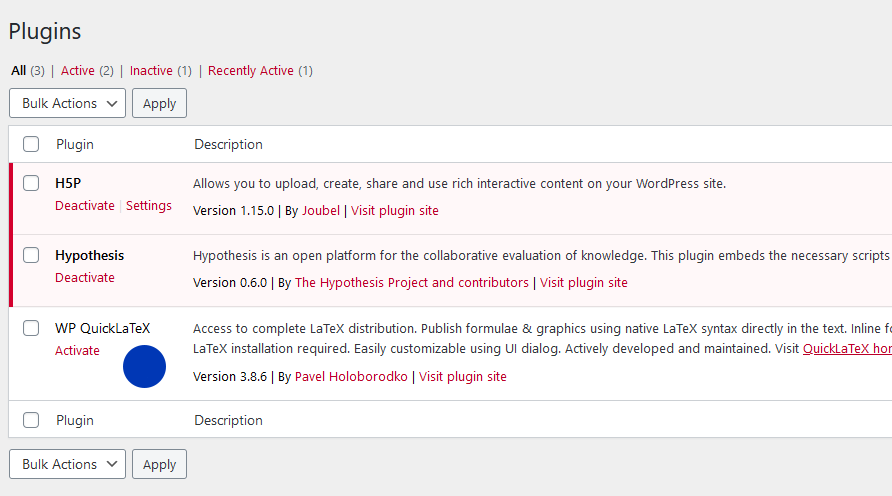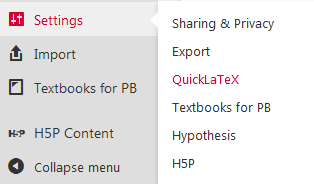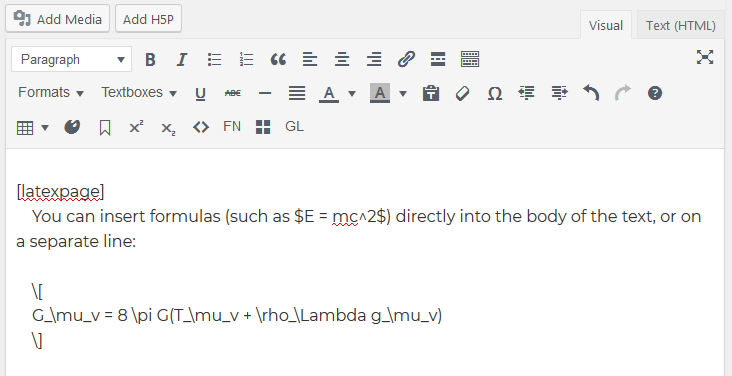QuickLaTeX
QuickLaTeX is a plugin that allows for better representation of math formulas and equations into Pressbooks text. It is adapted from the LaTeX programming language.
Enabling QuickLaTeX
To enable QuickLaTeX in your book, click on Plugins in the menu bar to manage plugin activation.

Click on the word Activate next to the WP QuickLaTeX plugin. You can also click the check box (or several), choose Activate from the Bulk Actions drop-down menu, and then hit Apply.
Writing with QuickLaTeX

Now that the plugin is activated, you can create formulas in the text window by using typed commands. Information about how to use QuickLaTex can be found in the settings menu. You can also make several other adjustments for how you want your formulas to look.
This is how you would write using QuickLaTeX:

And this is how it appears on the page:
You can insert formulas (such as ![]() ) directly into the body of the text, or on a separate line:
) directly into the body of the text, or on a separate line:
![]()
Doing that will create an un-numbered equation. If you want to number your equations so that you can easily refer to them, start and end your equation with “\begin {equation}” and “\end {equation}” (remove the spaces). This will result in the equation having a number to the right which you can reference in the text.
(1) ![]()
Note:
Here is a cheatsheet which lays out common symbols and how to write them.
Here is a comprehensive list of all LaTeX symbols and how to write them.

